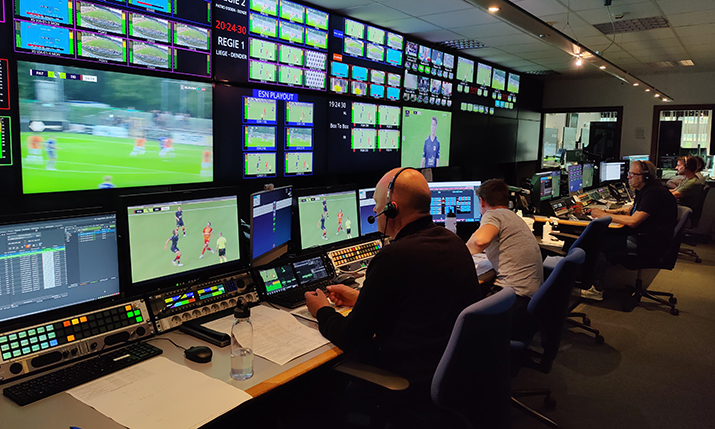Audio IP upgrade kicks off a busy season for Belgium’s Proximus Media House
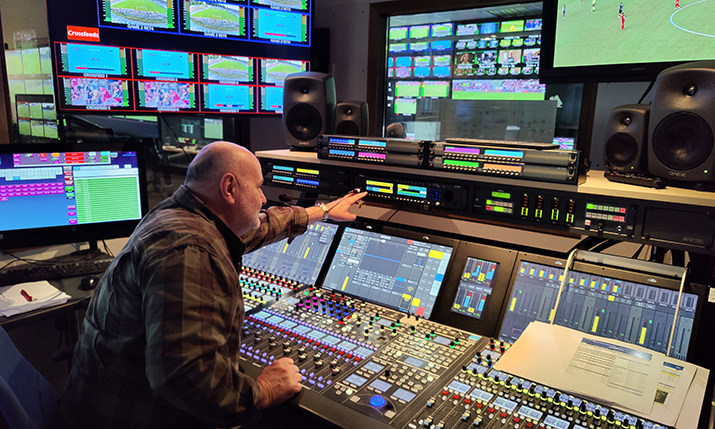
This summer, Proximus Media House (PMH) completed a full audio IP upgrade across its four studios and a vast network of football stadiums in preparation for the new football season. PMH CTO Larissa Görner and her team talk to SVG Europe about changing workflows, the challenges of repackaging content into three languages in real-time, and how IP is an enabler for future expansion.
When Royal Antwerp won Belgium’s league championship in June, two fantastic things happened.
First, the 147-year-old football club hired an open-top bus to celebrate its first league crown since 1957 and Antwerp went bonkers. Second, Belgian media giant PMH quietly got to work completing its massive IP infrastructure overhaul which it began in 2021.
PMH is part of the Proximus Group, the provider of digital services and communications across Belgium. It not only covers a range of live sports on its own channels but holds the rights to UEFA Champions League football in Belgium and is the service provider for all Belgium football to DAZN, as well as to a multitude of other distribution companies.
“Our orchestration is now completely switchable. In addition to our football coverage, we cover sports like basketball and cycling and for us, it is important to quickly switch to different configurations to make these different productions work.”
The company squeezes a lot of production from those games: Belgium’s Division One games are mixed at its central production hub and repackaged for a variety of end users with commentary. Pre- and post-game and halftime discussions are produced there, as are all Champions League games. Meanwhile, all Belgium Division Two matches are mixed there using pure remote workflows.
With such a lot going on, it’s no wonder that upgrade time is limited to the off-season. The final piece of the puzzle in its transition to a full ST2110 IP network was its audio network, which was completed prior to the new season kicking off on 28th July, creating an end-to-end 2110-based network for both audio and video.
First came VAR
Known as Proximus ST2110 ViCoNG (Video Contribution Next Generation), PMH’s network is built on dedicated fibre-optic network connections between 18 sporting arenas, the PMH production hub in Brussels, and the Royal Belgian Football Association’s (RBFA) headquarters in nearby Tubize.
“There was a requirement from the Belgium football rights holder to send more feeds from the stadiums to the central MCR here in Brussels, and to send more return feeds to them,” says Kenneth De Buck, head of operations for Live Events and Linear Channels at PMH.
”At the same time there was a request from the RBFA to centralise all VAR activities, which meant that they needed to have access to all the camera feeds at its hub in Tubize, so we combined those two projects together.
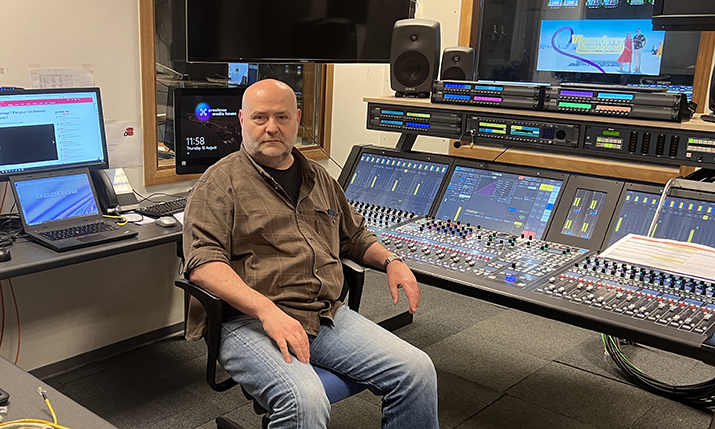
“From the end of the football season to the start the new one gave us seven weeks to integrate 18 stadiums, upgrade our production hub at PMH, add the links to the VAR in Tubize and cater for a number of broadcasters who were being added to that same network. With Covid creating additional challenges in 2021 we had to split up the video upgrade from the audio upgrade due to time, but our commitments to VAR took priority.”
Jetsen Van den Eede, who is a senior broadcast engineer at PMH and played a big part in managing the 2110 IP workflows, picks up the story: “Part of the installation was to install cabinets in each stadium so the host broadcaster could connect an OB van and all the camera feeds. We decided to include our own infrastructure that started with the recording and replays on EVS to bring them into our control room environment.
“With the infrastructure in place, the last piece of the puzzle was to upgrade our audio to an IP environment, which we completed with an upgrade from Lawo’s Nova core infrastructure to a 2110 A_UHD core infrastructure this summer.”
Part of the team
PMH are a long-time collaborator with Lawo and worked closely with the German company during the 2021 phase of the project, building on the integrations of Lawo’s VSM broadcast control system and V__matrix units. But their relationship with the German company goes back further than that.
In 2016, the broadcaster was already pushing the boundaries of sports broadcasting, mixing live football remotely from a central production hub every single week. Connecting Lawo V_Remotes and A_Mics to the Proximus network and using Lawo’s VSM for control allows PHM to produce all of Belgium’s Division Two games as fully remote productions, with only minimal cameras and microphones on site.
This summer’s audio IP upgrade builds on that relationship.
“The IP upgrade now covers the entire infrastructure,” says De Buck. “A big part of it is for distribution, but the biggest benefits are the upgrades for our production control rooms. We have four production control rooms and four audio control rooms for the distribution of our linear channels.
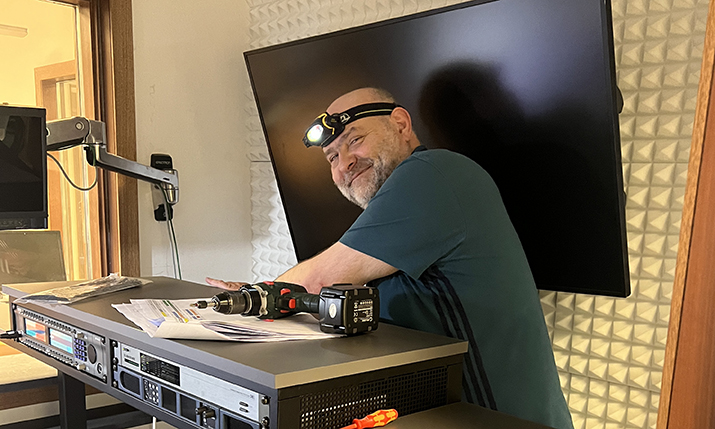
“We took the opportunity to replace two consoles with Lawo mc²56 consoles; this means we have six identical control surfaces which now sit on a 2110 audio network using Lawo’s A_UHD cores. The network integration also enabled us to introduce geo-redundancy to our network, with one part of the A_UHD core located on-premise and another in a data centre in a different building. It allows us to have two fully redundant IP workflows.”
Van den Eede adds: “Our orchestration is now completely switchable. In addition to our football coverage, we cover sports like basketball and cycling and for us it is important to quickly switch to different configurations to make these different productions work.
Language, language
“In addition, the 2110 upgrade allows us to use different video control rooms with different audio control rooms, or even combine them for larger productions, which is valuable because most of our productions are bilingual.
“For a lot of our productions, the video is identical for Dutch and French and there we produce a single PGM with multiple audios which are repackaged by our MCR. On other productions, we are producing separate programs in French and Dutch, for which we need to use two separate studios and two separate galleries. Our new network gives us more flexibility in the way we use our infrastructure.”
Although Belgium is a bilingual country, PMH is the only broadcaster in the country which creates simultaneous Dutch or French programming for all of its productions.
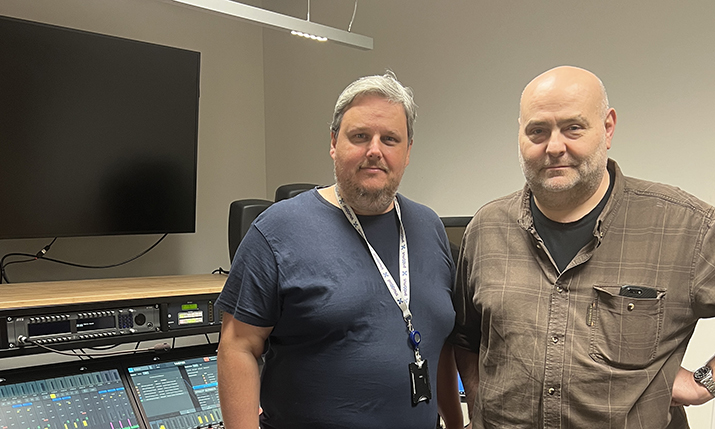
“This can be pretty challenging,” says PMH CTO Larissa Görner. “For example, we can be covering eight Champions League football matches at one time, each in multiple languages, which means we can have 16 commentators here on site in 16 voice booths at the same time! In addition, matches which are being broadcast internationally on satellite to rights holders around the world also require English commentary, and are also produced in PMH’s voice booths.”
De Buck adds: “OBs on site will produce a different feed depending on the type of match; either a master feed with commentary on it, or separate audio feeds on different tracks, and we manage it all here to ensure it is on the right output for the right program. We basically receive one set of feeds and from that we produce three different programs in Dutch, French and English.”
Getting more remote
This season, PMH will be doing more remote productions than ever before, with up to eight Division Two matches every weekend. Each game features six cameras on site and provides 24 tracks of audio, with minimal onsite personnel: just commentators, one audio technician, one video technician and five camera operators.
“The rights holders prefer to cover the games with an OB on site, but we are creating more remote productions on our ViCoNG network on an ad hoc basis where we can install 10Gb connections to virtually any location for remote production.”
Following the switch to IP, Van den Eede sees this requirement only getting bigger. “Our 2110 backbone is fully capable of stepping up to perform remote production to cover Division One games as well,” he says.
“In theory we can already do it from those stadiums, it’s the same production model. Right now, the rights holders prefer to cover the games with an OB on site, but we are creating more remote productions on our ViCoNG network on an ad hoc basis where we can install 10Gb connections to virtually any location for remote production.”
Owning the network
PMH claims that its connectivity is second to none. Quoting a worst-case audio and video round trip of 11 milliseconds, PMH says it has never needed any edge processing for in-ear monitoring.
Of course, it helps when you own the fibre network. “It’s the Proximus group’s own dark fibre network which links directly to the stadiums, so we don’t have any additional hops on the network,” says Görner. “It means we can access the same speed and connectivity from any fibre access point.
“We are not doing IP for the sake of IP; once it is set up it is quickly deployable and provides full end-to-end control across the entire network. It enables us to monitor for audio, video, delay jitter, network, and quality of fibre down to a signal level. You can’t do that with an SDI backbone.
“And scale is no longer limited because the scale is really just bandwidth, especially for audio. One network cable can deploy hundreds of audio signals, and once we start talking about new audio formats like immersive or personalisation, we’re going to be able to do all that from here. It helps us to continue to provide really great experiences for all our customers.”
